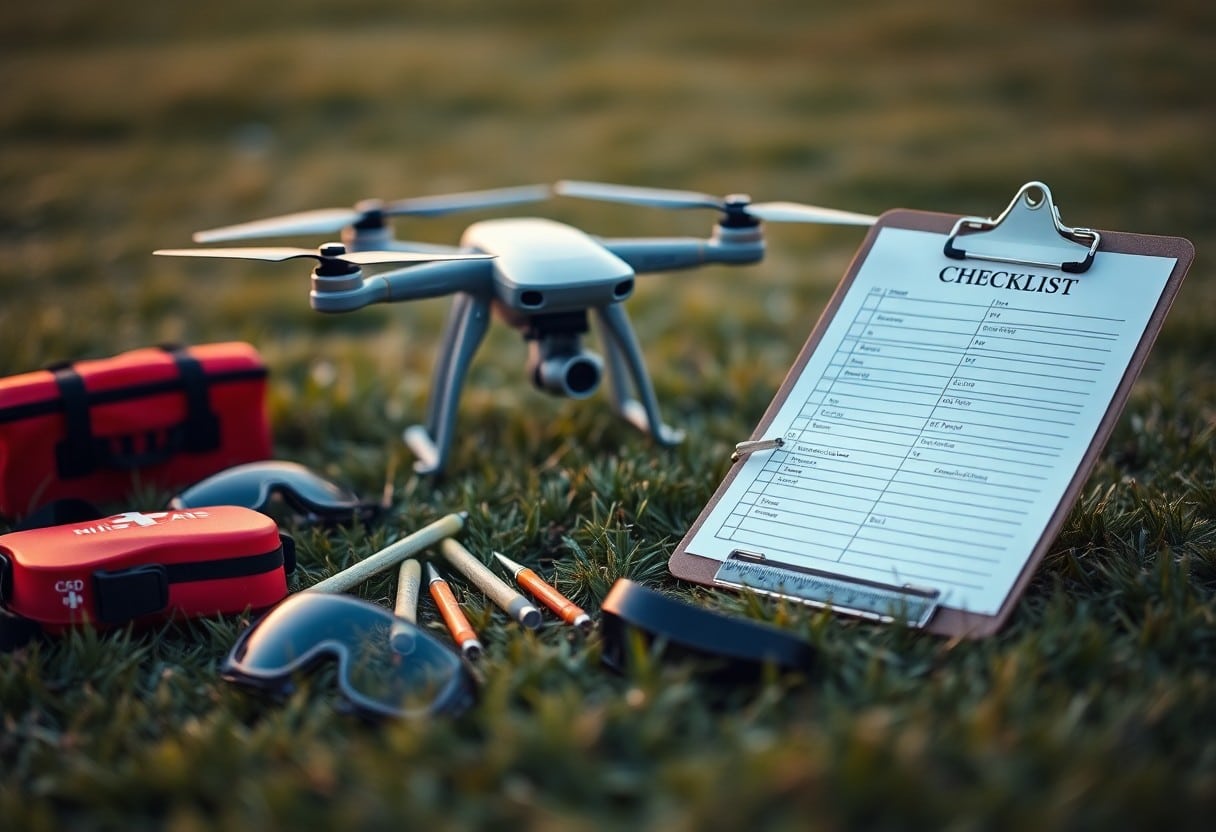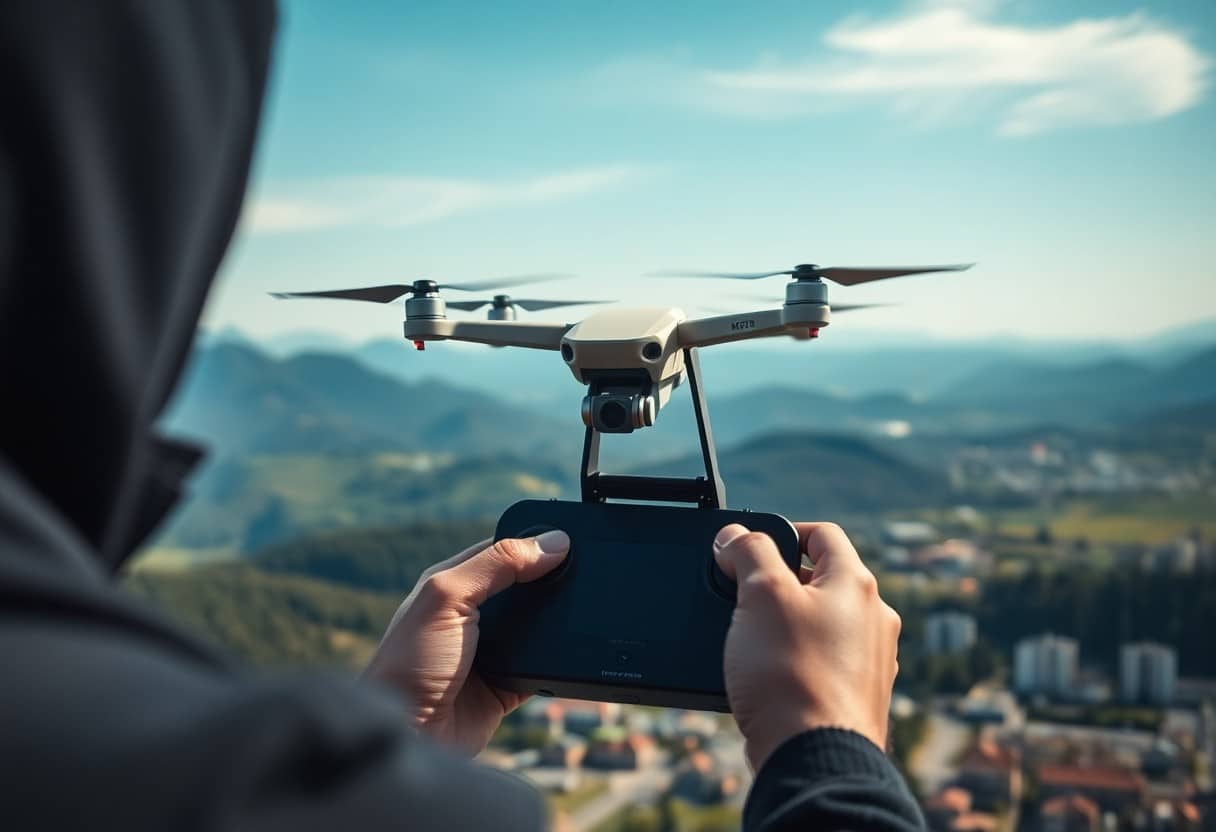A Step-by-Step Guide to Understanding Drone Components - 6 Key Insights
In this article, you will get an in-depth look at the various components of a drone and their functions. We will provide you withSix Key InsightsThis guide is designed to help you better understand the operation of your drone system, whether you are a novice or an experienced pilot. Mastering these elements will not only improve your maneuvering skills, but will also give you the peace of mind you need to enjoy flying your drone while avoiding the potential forDangerous. Explore these important components of the drone together!
Key Points:
- Drone Components: Understand the major components of a drone, such as flight controllers, batteries, and sensors.
- Flight Controller: Like the brain of a drone, it is responsible for controlling its movement and stability.
- Sensor Technology: Includes cameras, GPS and other sensors that enhance the functionality and performance of the drone.
- Battery Performance: The capacity and life of the batteries will directly affect the flight time and efficiency of the drone.
- Wireless Communications:: The remote control system of the drone and the way it communicates with the ground station are of paramount importance.
- Flying Safety: Ensure that components are designed and used in accordance with safety standards to avoid accidents and incidents.
- Maintenance and Upgrades: All components require regular maintenance and appropriate upgrades to maintain optimal performance.
Drone Component Type
Understanding the different components of your drone is essential to mastering its performance. Each component plays a key role in the overall functionality, and especially for newcomers, understanding their function and categorization will help you better operate your drone.
- fuselage
- Advancement System
- Flight Controller
- Sensor
- Battery
| fuselage | The structural framework of the drone that supports the other components. |
| Advancement System | Includes electric motors or engines that drive the drone to fly. |
| Flight Controller | Responsible for stability and navigation of the drone. |
| Sensor | Provides height, location and environmental information. |
| Battery | Supplying power to the drone affects range time. |
fuselage
fuselageIt is the base frame of the drone that supports the installation and configuration of all other components. Choosing the right material affects not only the weight of the drone, but also itsdurabilityrespond in singingstabilityThe
Advancement System
The propulsion system is the power source of the drone and includesMotorsThese components directly affect the ability of the drone to fly, including speed and maneuverability. The performance of these components directly affects the ability of the drone to fly, including speed and maneuverability.
Promotion of the systemSelectionDepends on your flying needs, whether for aerial photography or racing purposes. Efficient propulsion systems can improve the performance of your drone, but you also need to pay attention to safety to ensure controlled flight.
Flight Controller
The flight controller is the "brain" of the drone, responsible for monitoring the flight status and making real-time adjustments. It integrates a variety of sensors to ensure the stability of the drone during flight.
Choosing the right drone for youFlight ControllerIt's important because it affects not only the control experience, but also safety. Modern flight controllers often have an automatic stabilization feature, which makes them easier to operate.
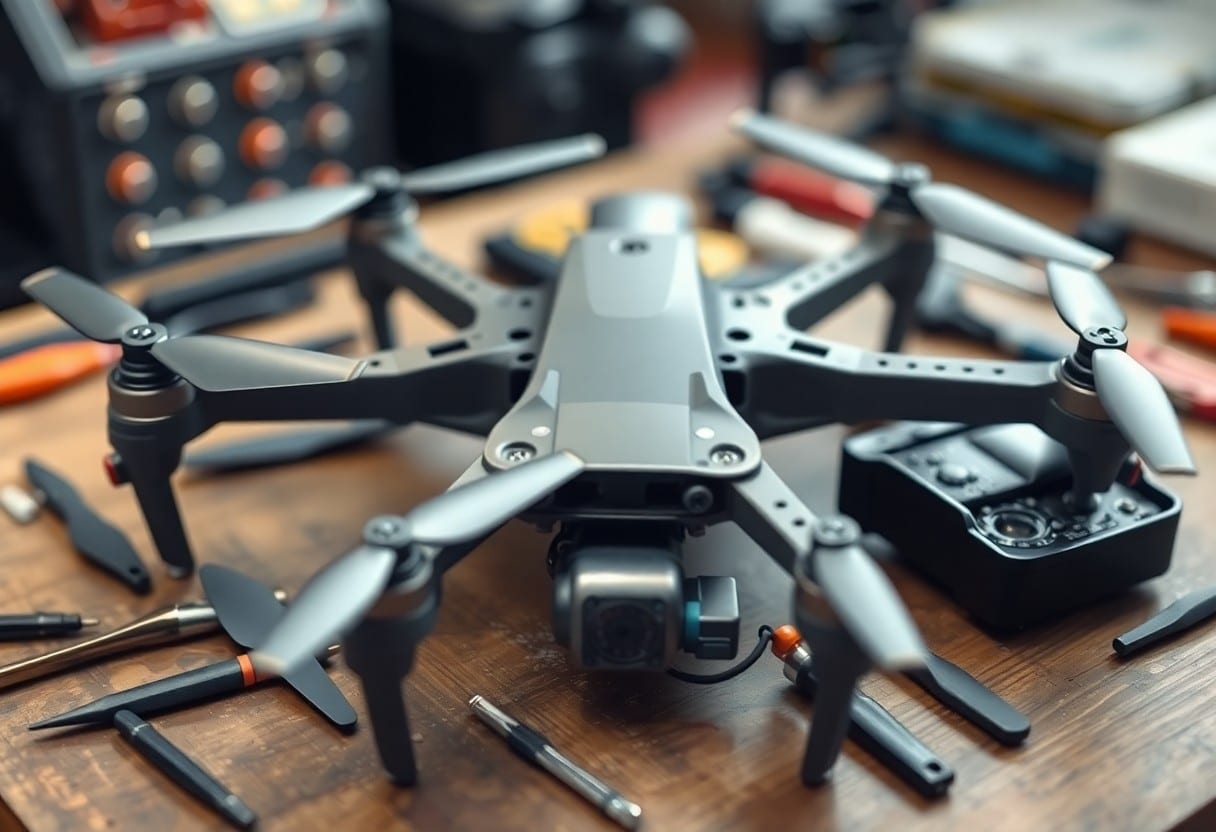
Key Factors in Selecting Drone Components
When selecting drone components, there are severalKey Factorsneed to consider. First, determine what youruseThis will affect the type of component you choose. Secondly, it is important to know what each component'sperformancesThe most important thing is thatBattery LifeThird, assess the quality and flight stability of the camera. Third, evaluate the component'sconsistencyTo ensure that they work well together. Finally, considerBrand Reputationand after-sales service. To choose the right components, you can refer to8 Steps to Perfecting Your Drone Navigation SkillsThe
Purpose and use cases
You first need to consider the drone'sgoalrespond in singingUse CasesThe following are some examples of the types of components that will be needed. Different uses, such as aerial photography, racing or agricultural monitoring, will require different types of components. For example, if you specialize in aerial photography, you may need a high-qualitycameraand stableSuspension SystemThe
Budget Considerations
When choosing a drone component, it is expected to be aKey ConsiderationsSetting a clear budget range will help you sift through your options and avoid unnecessary spending. Setting a clear budget range will help you filter your choices and avoid unnecessary spending. At the same time, it is important to understand how different componentsPrice rangeThe most cost-effective options are available to you.
When you considerBudgetWhen investing in critical components, such as the Crown, keep in mind that some components may affect the overall performance and life of the product. Invest in critical components such asBatteryrespond in singingElectricityon are usually worthwhile because they directly affect the drone'sFlight Timerespond in singingstability.. Make sure you don't compromise quality for low price, which can lead to poor user experience and safety risks. Consider these factors extensively when setting your budget and choose the right components for your needs.
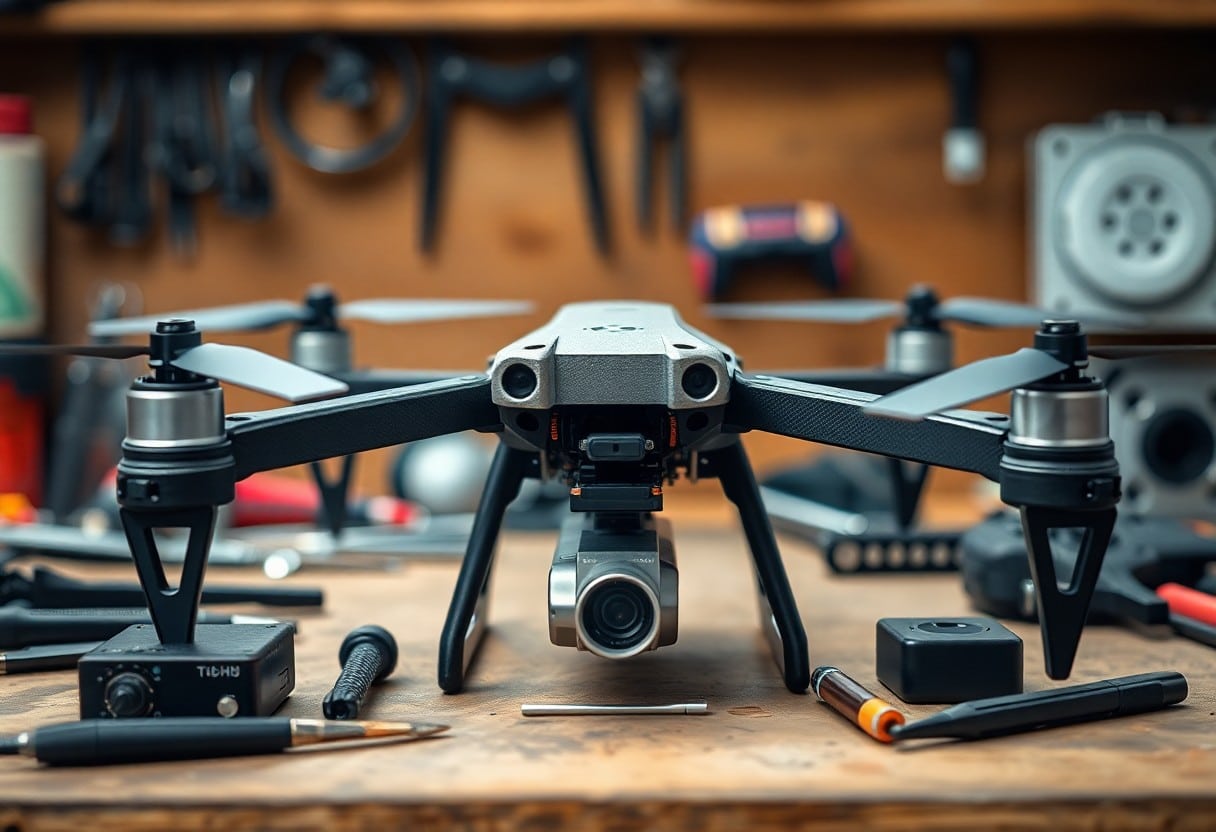
Step-by-Step Guide to Assembling Drone Components
Before you start assembling your drone, it is important to understand how each component functions and connects. You can refer toHow to cross the no-fly zone effectively?for detailed steps and information. Below is a simple overview of the assembly process:
| Steps | Detailed Description |
|---|---|
| 1. Preparation of tools and materials | Make sure you have all the necessary tools and materials. |
| 2. component inspection | Check all drone components one by one to make sure there is no damage. |
| 3. assembling the main frame | Assemble the mainframe according to the design drawing to ensure stability. |
| 4. Installation of motors | Carefully follow the instructions for installing the motor in the main unit rack. |
| 5. Connecting Electronic Components | Connect the electronic speed control (ESC), battery, etc. to the relevant components. |
| 6. testing and adjustment | Tests are conducted prior to flight to ensure that all components are functioning properly. |
Preassembly Inspection Checklist
Before starting the assembly, you need to check that you have all the necessary parts and tools. Make sure you have all the components of the drone, such as the main frame, motor, electronic speed control (ESC), batteries, propellers, and tools. Check that each part is complete and ready to go, and have any cables and connectors you need.
Component Assembly Procedures
The process of assembling the drone components requires you to follow the instructions carefully. During assembly, thePlease handle all electronic components with care.to avoid short circuits or other potential hazards. In addition.Ensure proper orientation of motor and propellerand installation to ensure the stability and performance of the drone.
In the specific component assembly procedure, you need to assemble the main frame first, and then fasten the motor, ESC and other electronic components to the main frame in turn. After each connection, theVerify that the connection is secure. Once all components have been installed, you should perform an initial inspection, including checking the polarity of the battery connections, to ensure that each component is functioning properly.To prevent accidents.
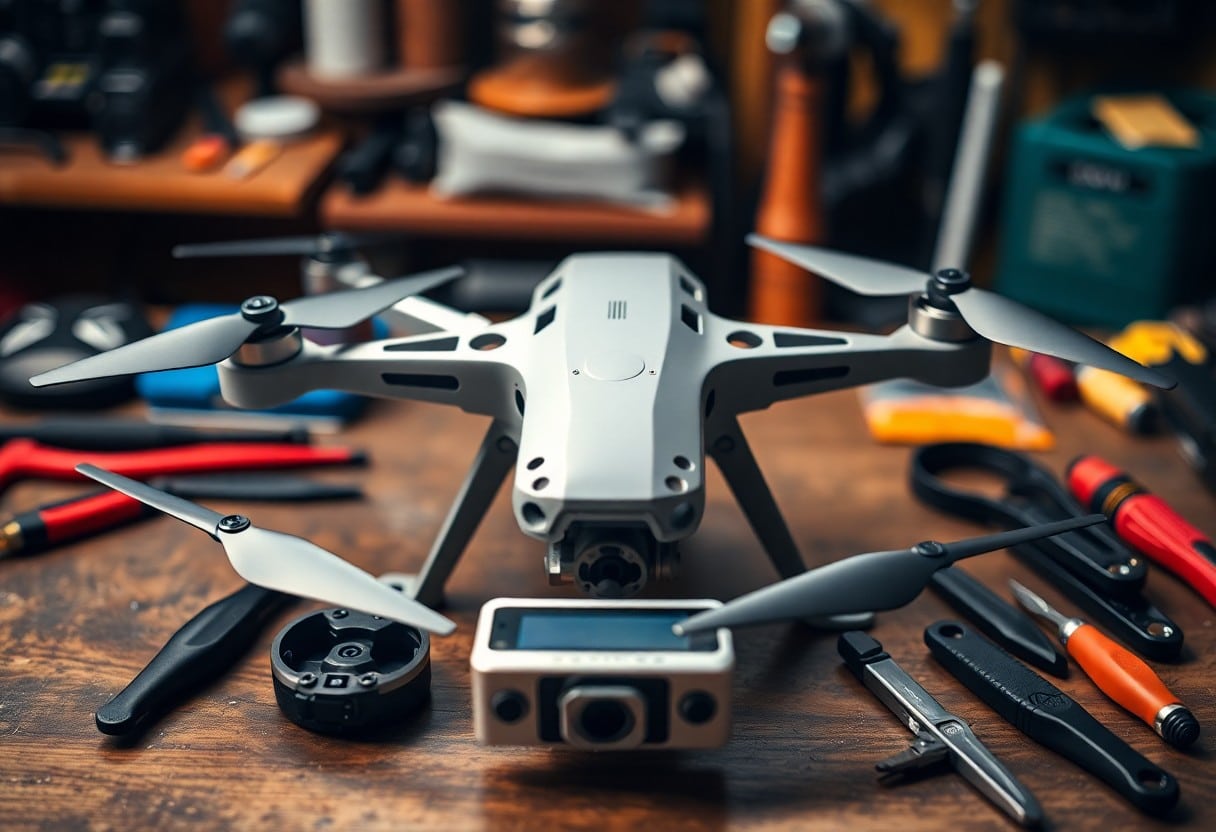
Tips for Maintaining Drone Components
Maintaining your drone's components is critical to ensuring its long-term operation. With regular inspections and proper cleaning and maintenance, you can extend the life of your drone and improve its performance. Here are some maintenance tips:
- Regular InspectionComponents for Drones
- cleanlinessPropellers and other external parts
- secureDrones to avoid damage
- regular updateSoftwareto ensure optimal performance
Any small maintenance oversight can affect your flying experience.
Regular Inspection
Regular inspections of your drone's components are essential to ensure its safe operation. It is recommended that you do this before and after each flight or at regular intervals. You need to look closely atBatteryMake sure there are no abnormalities or wear and tear on propellers, airframes and metal connections.
Cleaning and Maintenance Techniques
To make sure your drone stays in top working order, you need to clean and maintain it regularly. Use a soft-bristled brush and clean cloth to gently removeimpuritiesFor batteries and electronic components, avoid direct contact with moisture, dust and other debris, especially in critical areas such as propellers and air vents. For batteries and electronic components, avoid direct contact with moisture and choose a dry environment for storage.
The most important thing to remember when cleaning and maintaining your drone is to handle it with care.Component Damageor affect flight safety. Ensure that you use professional cleaning tools and paste-free fragrances when cleaning, and take care to keep electronic components dry. If you find any wear and tear or abnormalities, replace the damaged parts in time to avoid further damage.
Pros and Cons of Different Drone Components
When choosing a drone component, it is important to understand the advantages and disadvantages of each component. Below are some of the main advantages and disadvantages you should consider to help you make an informed choice.
| Advantages | Disadvantages |
|---|---|
| Lightweight design | May be more fragile |
| Easily accessible finished product | Higher cost |
| Brushless motorized high efficiency | Difficult to maintain |
| Low cost of brush motors | Relatively poor performance |
| Easy to repair | Shorter life span |
| Easy to upgrade | Compatibility Issues |
For more information, you may refer toWhich camera settings should you use to get the best drone photography results?This will help you learn more about the components you need.
Lightweight and durable materials
In drone components, lightweight materials often improve flight efficiency, but theirdurabilityIt may be inferior. Conversely, durable materials are heavier but offer better protection and durability. When choosing, you need to make a balance based on your usage scenario.
Brushless and brushed motors
In a drone, the choice of motor is crucial. Brushless motors offer higherEfficiency and performanceBrushed motors have a cost advantage but do not perform as well as brushless motors, which are more expensive and difficult to maintain.
Brushless electric motors are known for theirHigher efficiencyand low failure rate for users who are looking for performance. However, this type of motor'sRelatively expensiveIf you are on a budget, a brushed motor may be a better choice. While brushed motors may not offer the same performance as brushless motors, they do have the advantage of price and ease of maintenance, giving you more flexibility in choosing the right components. The choice of motor should be an informed decision based on your needs and budget.
A Step-by-Step Guide to Understanding Drone Components - 6 Key Insights
With this guide, you'll not only master the basic components of your drone, you'll gain a deeper understanding of how each part works together to affect overall performance. Understanding important components such as batteries, controllers, cameras, and more will help you make smarter choices and enhance your flying experience. As technology evolves, continuing to learn these key insights will keep you competitive in the drone field, enhancing your skills and knowledge.
Frequently Asked Questions
Q: Who is this guide for?
A: This guide is for all readers interested in gaining an in-depth understanding of drone components, whether they are beginners or advanced.
Q: What are the key components of the drone provided in this guide?
A: This guide takes an in-depth look at the six key components of a drone, including the flight controller, battery, motor, propeller, receiver and transmitter.
Q: Why is it so important to understand the components of a drone?
A: Understanding the components of a drone helps the user make informed decisions about selecting, operating, and maintaining the drone, and improves the safety and efficiency of flight.
Q: Do I need to have any basic knowledge before reading this guide?
A: No need, this guide starts from the basic concepts and leads the reader step by step to gain a deeper understanding of the structure of the drone and its operation principles.
Q: Does this guide cover the assembly process of a drone?
A: This guide focuses primarily on explaining the components of the drone. Although it does not specifically discuss assembly, understanding the parts will help in the future assembly process.
Q: Is the information in this guide outdated?
A: This guide is based on the latest information available as of October 2023. Drone technology is rapidly evolving, and readers are advised to stay tuned to industry developments for the latest information.
Q: Where can I find more resources about drones?
A: Readers can refer to drone specialized websites, forums, YouTube channels and related books for more in-depth knowledge and technical guidance.
